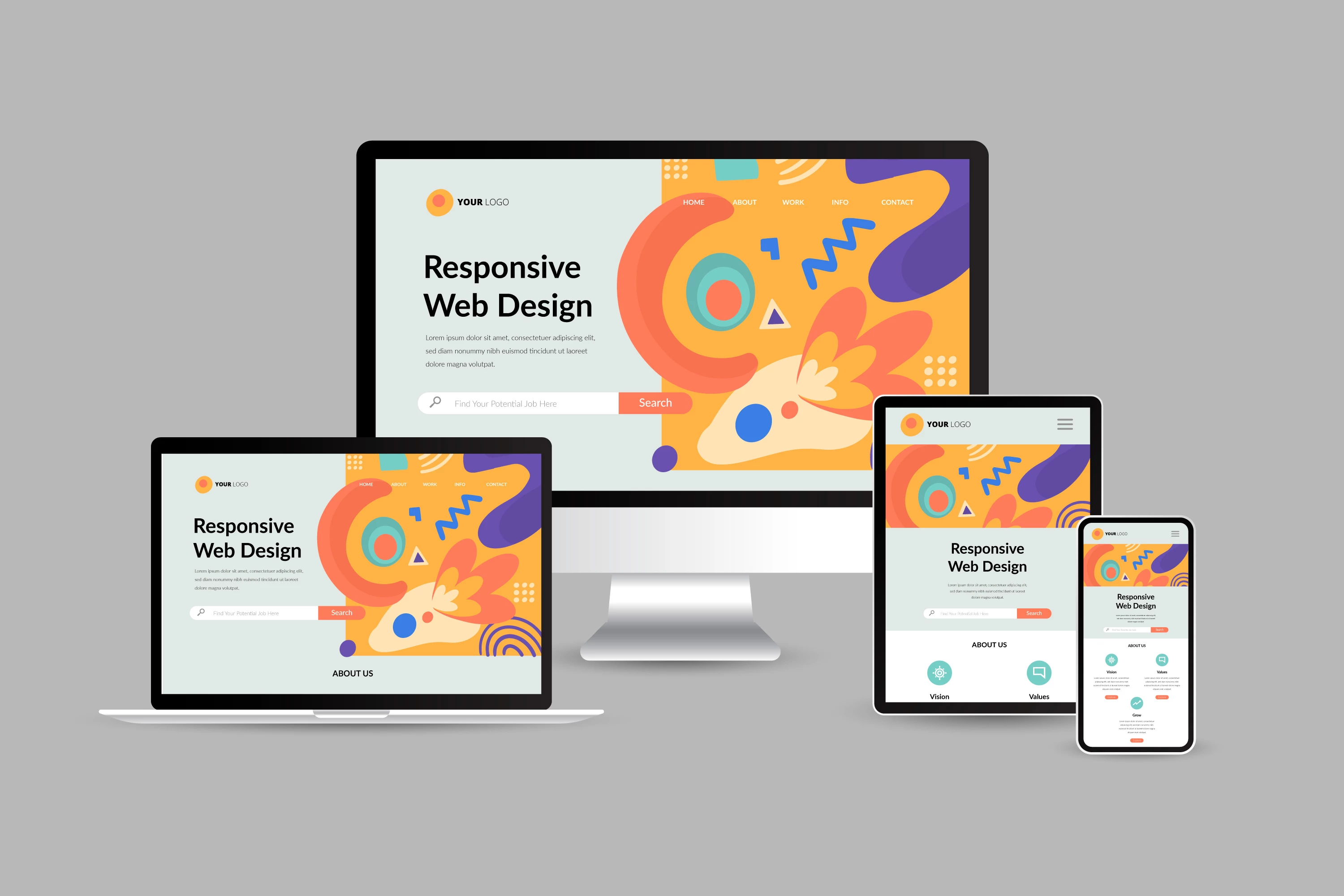Change Your Brand with Cutting-Edge Website Design Methods
Change Your Brand with Cutting-Edge Website Design Methods
Blog Article
Understanding the Duty of Responsive Design in Modern Internet Site Advancement
In today's digital landscape, receptive layout is no longer a deluxe yet a necessity in web site growth. The relevance of responsive style prolongs past customer experience-- it is additionally an important factor in search engine optimization and availability.
Value of Responsive Layout
In today's electronic landscape, the relevance of receptive design in website advancement can not be overstated. As consumers increasingly count on a selection of tools-- varying from computer to smart devices and tablet computers-- making certain a smooth individual experience across all systems has ended up being necessary. Receptive style allows web sites to immediately change their layout and functionality based upon the display size and orientation of the device being made use of. This flexibility improves individual involvement and contentment by supplying constant access to web content without calling for hands-on modifications such as zooming or scrolling.
Furthermore, responsive style is critical for search engine optimization (SEARCH ENGINE OPTIMIZATION) Internet search engine like Google focus on mobile-friendly web sites in their search results page, implying that a receptive design can significantly affect a site's visibility and ranking. This optimization not only enhances the user experience but likewise drives organic web traffic and increases the capacity for conversion and revenue generation.
Additionally, responsive layout offers organizations an economical remedy by getting rid of the need for several variations of a website. By enhancing web growth processes and minimizing upkeep efforts, business can allocate resources extra efficiently, eventually bring about improved roi. Thus, responsive style is essential in today's affordable electronic environment.
Crucial Element of Responsive Layout
To effectively carry out receptive layout, it is vital to concentrate on numerous crucial elements that make certain optimal capability and customer experience throughout diverse gadgets. One of the fundamental components is the flexible grid layout, which allows designers to create fluid grids that automatically get used to different screen sizes. This guarantees that web content maintains proportionality and readability, regardless of the device being used.

In addition, touch-friendly navigating is essential for responsive style. Executing conveniently tappable buttons and intuitive gesture controls improves functionality on touchscreen devices. Prioritizing efficiency optimization is likewise vital, as it enhances filling times and lowers bounce prices, specifically on mobile networks with variable speed.
Last but not least, employing a mobile-first approach ensures that the layout is originally optimized for smaller screens before increasing to fit desktops. This method guarantees that important functionality and appearances are maintained across all platforms, inevitably improving the overall customer experience.
Impact on Customer Engagement
Responsive layout dramatically influences customer interaction by boosting availability and complete satisfaction across different devices. By making sure that a website's format adapts seamlessly to various screen dimensions, receptive style permits users to accessibility content easily, whether they are using a desktop computer, smartphone, or tablet . This adaptability lowers the requirement for unneeded zooming or scrolling, giving a more enjoyable and instinctive surfing experience. Therefore, users are more probable to remain on the site much longer, discover additional pages, and communicate with the material, every one of which are crucial indicators of increased interaction.
Additionally, receptive style adds to much faster web page packing times, which is vital for maintaining individual rate of interest. Individuals are a lot more inclined to abandon a website if it takes as well lengthy to load, especially on smart phones. By enhancing efficiency for diverse systems, responsive design reduces filling hold-ups, keeping customers engaged and decreasing bounce rates.
SEO Advantages of Responsive Style
While boosting individual experience is a primary objective, receptive style also plays an important role in enhancing a site's seo (SEO) Look engines, significantly Google, focus on mobile-friendly web sites, thus awarding those that offer smooth experiences across gadgets. Receptive style makes certain that a web site adapts to various screen dimensions, getting rid of the demand for separate mobile and desktop variations. This adaptability not just enhances individual experience yet likewise lowers the risk of duplicate web content, which can negatively affect search engine optimization rankings.
In addition, responsive layout aids in faster web page packing times, an essential element in SEO. Internet search engine prefer sites that pack swiftly, identifying that customers are most likely to abandon sites that take too long to display. By employing responsive design, developers can enhance photos and streamline content, making over at this website certain effective packing and enhanced online search engine positions.
Furthermore, a cohesive URL structure across devices streamlines the indexing procedure for internet search engine, boosting Related Site crawl effectiveness. This uniformity in Links enhances an internet site's authority and credibility, leading to boosted exposure in search engine result. In summary, receptive style is not simply a trend yet an essential element of SEO strategy, making certain web sites are both easy to use and online search engine suitable.
Applying Receptive Design Approaches
In the world of contemporary internet development, implementing responsive style strategies is comparable to crafting a versatile canvas that readjusts seamlessly to various screen measurements. An additional vital technique involves employing media inquiries, which make it possible for programmers to apply different styles based on the qualities of the gadget, such as resolution, size, and height.
Responsive pictures and media are likewise important elements. By using methods like CSS media questions and the HTML 'image' component, developers can offer suitably sized images based upon the customer's tool, optimizing load times and enhancing user experience. Furthermore, the unification of liquid typography makes certain that message is understandable and cosmetically pleasing on any type of screen, achieved through scalable devices like 'rapid eye movement' and 'em'.

Conclusion
Responsive design makes up a crucial element of modern web site development, significantly boosting customer experience across an array of gadgets. Ultimately, applying receptive layout approaches makes sure enhanced accessibility and functionality, providing sites you can try here extra efficient and user-centric.
To efficiently apply responsive style, it is important to concentrate on a number of key aspects that make certain optimal performance and customer experience across varied tools.Responsive style significantly influences individual involvement by enhancing availability and fulfillment across different tools. By ensuring that a site's design adapts seamlessly to different display dimensions, receptive design enables individuals to accessibility content effortlessly, whether they are utilizing a tablet, mobile phone, or desktop .While enhancing individual experience is a main objective, receptive style likewise plays an important function in enhancing a web site's search engine optimization (SEARCH ENGINE OPTIMIZATION)Receptive style makes up a necessary facet of modern internet site growth, considerably improving customer experience across a variety of devices.
Report this page